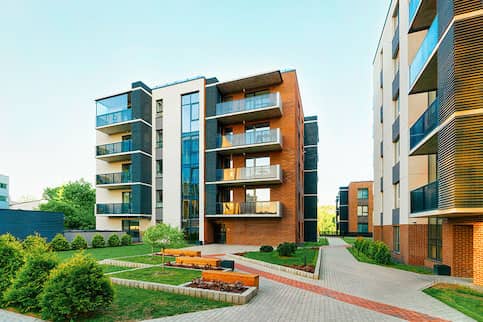Browsing Conflicts Within Your Condo HOA: Advice
Browsing Conflicts Within Your Condo HOA: Advice
Blog Article
Exactly How Condo HOA Regulates Shared Rooms and Enhances Community Consistency
The administration of shared rooms within a condo association plays a pivotal duty in cultivating area cohesion and preserving building worths. Through the establishment of comprehensive standards, the Apartment HOA not only controls the usage of common services yet also advertises a society of regard and accountability amongst citizens.
Role of the HOA
The property owners association (HOA) serves as the regulating body for condominium areas, playing a crucial function in maintaining the property and promoting a cohesive living atmosphere. It is responsible for imposing and establishing community regulations and guidelines, which are created to preserve the aesthetic value and functionality of the common space. This governance makes certain that all locals adhere to a standardized collection of expectations, fostering a feeling of unity amongst varied house owners.
In Addition, the HOA takes care of the monetary facets of the community, consisting of budgeting, collecting fees, and maintaining typical locations. This economic oversight is crucial in making certain that essential maintenance and enhancements are carried out promptly, enhancing property values gradually. The HOA likewise functions as an intermediary in between residents and external entities, such as neighborhood government and company, attending to common worries properly.
Furthermore, the HOA usually organizes neighborhood events and programs, urging neighborly communications and developing relationships amongst residents. By promoting open interaction and addressing complaints, the HOA adds to a harmonious living setting. Thus, its diverse duty is necessary in guaranteeing the smooth procedure and overall satisfaction within condo neighborhoods.
Guidelines for Shared Areas
Effective governance in condominium neighborhoods necessitates clear rules for shared spaces, which are important for keeping order and promoting a feeling of community amongst residents. These rules act as standards that ensure everyone can appreciate common areas, such as pools, yards, and recreational facilities, without conflict.

Additionally, tidiness and upkeep requirements are important, frequently stating that residents have to tidy up after themselves and report any type of damages to the homeowners' association. By clearly interacting these expectations, the HOA can decrease misconceptions and encourage respect among citizens.
Inevitably, distinct rules for common spaces add to the overall high quality of life in a condominium neighborhood, permitting citizens to coexist in harmony while delighting in the features that improve their living i was reading this experience. condo hoa.
Value of Area Standards

Neighborhood guidelines play a substantial duty in cultivating a natural and considerate setting within condominium associations. These standards develop clear assumptions for locals, promoting a feeling of responsibility and shared responsibility. By defining acceptable behaviors and practices, neighborhood standards assist avoid misconceptions and problems amongst homeowners.
In addition, these standards function as a framework for keeping the visual and practical honesty of common spaces. They ensure that all citizens comply with standards regarding property upkeep, sound levels, and use of public facilities. This harmony not only enhances the visual charm of the neighborhood but additionally adds to general residential or commercial property values, benefiting all homeowners.

Problem Resolution Strategies
Browsing conflicts within a condo organization requires an organized method to make sure effective and reasonable resolution. Effective problem resolution strategies typically begin with open communication, motivating residents to voice worries in a respectful manner. Establishing a marked network for complaints, such as an idea box or an online forum, can facilitate this procedure.
Mediation is one more vital method, where a neutral 3rd party aids disputing homeowners get to a mutually acceptable remedy. This technique cultivates partnership and understanding, reducing hostility - condo hoa. The HOA board ought to additionally create clear procedures for addressing problems, making certain all parties know the steps entailed
Normal problem resolution training for board members can boost their capability to manage disputes efficiently. Using a distinct framework, such as the "Interest-Based Relational Technique," assists concentrate discussions on rate blog here of interests rather than settings, promoting a solutions-oriented mindset.
Benefits of Community Harmony
Cultivating community consistency within a condo organization brings many advantages that enhance the general living experience for homeowners. An unified community motivates partnership and cooperation among next-door neighbors, causing an extra gracious environment. When citizens feel recognized and connected, they are most likely to engage in common activities and take part in decision-making procedures, leading to a more powerful sense of belonging.
Additionally, area consistency dramatically reduces misunderstandings and problems, which can otherwise interrupt every day life. A peaceful setting decreases stress and anxiety and promotes psychological health, allowing locals to appreciate their homes completely. Furthermore, unified connections often equate right into increased building values, as possible customers are drawn to communities characterized by stability and participation.
Conclusion
In summary, the function of the Condo HOA is essential in regulating common areas and cultivating community harmony. condo hoa. Through the establishment of clear guidelines and area standards, locals are motivated to preserve a liable and considerate setting. Effective problem resolution strategies even more enhance interaction and partnership among residents. Inevitably, the efforts of the HOA add to a cohesive area, advertising both building values and total resident satisfaction. The positive effect of these campaigns is necessary for continual communal well-being.
Moreover, the HOA often organizes area events and programs, motivating neighborly communications and click this developing connections among homeowners. By delineating acceptable habits and techniques, area standards help stop misunderstandings and problems amongst residents.
In addition, neighborhood standards assist in efficient interaction among citizens and the Homeowners Association (HOA) With the establishment of clear rules and community guidelines, locals are urged to maintain a respectful and responsible setting. Eventually, the efforts of the HOA contribute to a natural area, promoting both home values and overall resident complete satisfaction.
Report this page